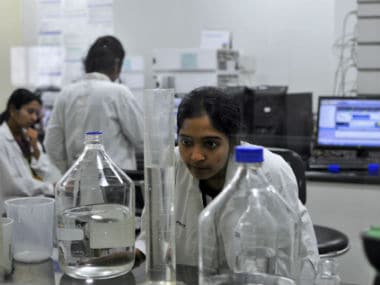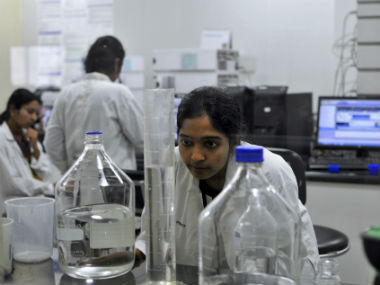India has seen some success in the recent past in their space missions and has earned international acclaim for its ambitious space programme, which includes launch vehicles, communication satellites and one of the world’s largest constellation of remote sensing satellites. Also, there has been a surge in the number of Indians who wish to pursue research closer to home, in India, rather than move abroad in spite of state of the art facilities there. [caption id=“attachment_4268083” align=“alignleft” width=“380”]  Representational image. Reuters.[/caption] According to a survey by Springer Nature, India stands in the second position in the list of countries with the highest increase in their contribution to high-quality scientific research. However, challenges remain. India has employed only 40 researchers per lakh labour force for the last decade as compared to USA’s 790 per lakh of their labour force. India’s **expenditure on research** remains stagnant at a dismal 0.9 percent of its GDP since the last decade, which is much less than developed countries like the US and emerging economies like China. In the United States, research-oriented universities encourage faculty to undertake research along with teaching. The faculty is assessed both on the quality of research they bring forth and their teaching skills. While universities receive support from the government they also have symbiotic relationships with the private sector. The government provides grants and funds to encourage research for the larger good, the private companies fund projects for specific research that finds solutions to their clients’ problems. Also, the universities have the right to license their innovations/findings which brings in financial rewards as well, in form of royalty. This ecosystem permits people from the universities and the corporate sector to move back and forth, and collaborate. Collaboration is not only an important part of the research, it is a necessary catalyst that helps develop different ideas into groundbreaking scientific discoveries. A recent example of effective collaboration is the work of this year’s Nobel Prize laureates in Physics viz. Rainer Weiss, Kip S Thorne, and Barry C Barish. They pioneered LIGO, or the Laser Interferometer Gravitational-Wave Observatory, the scientific project that made gravitational wave detection possible. But the LIGO project involved thousands of scientists working across the world for many decades. Unfortunately, in India, the ecosystem does not facilitate such efficient collaborations. There is a push, however, for Indian universities to become more research oriented. Recent developments suggest that though the red tape is all-pervasive in India, the challenges are not dampening the spirit of Indian scientists. According to Nature 2016 Index, in terms of output indicators such as the number of scientific publications, India is among the top performers in the world. Brain drain seems to be slowing down too, as more scientists are returning home after work stints abroad. Recent investments in infrastructure have produced new institutions all over the country, and, the government is trying to bring back India’s bright expats living abroad with the promise of world-class research infrastructure and funding. There is a double benefit here, as experienced and competent academicians have a positive influence on the next generation of students and a research-oriented faculty can make that contribution in India. There is a need for a fundamental shift in thinking to create a conducive **ecosystem** with increased government participation. Faculty from the premier institutes of sciences could be freed from routine administrative duties to devote more time for research. One of the challenges for research in India is that many Indian students prefer to major in engineering rather than science, because of the promise of lucrative industrial career opportunities. We need to find ways to make research a more lucrative career option so that more bright young minds are motivated to pursue research. This also requires us to make systemic changes at the school level to ensure learning is more experience based, and less classroom oriented. Encouraging curiosity, and divergent thinking will foster scientific thinking. In a developing country like ours, there are many areas where research is critical in finding cost-effective solutions. Affordable healthcare and medical devices that don’t require external electrical sources of power for operation are one of them. CeNSE, a high-priority project at the Indian Institute of Science is trying to do just that: they hope to use nanoelectronics to produce cheap wireless biosensors can help to monitor diabetes in underserved communities in rural India. This would be beneficial to a large section of the population with diabetes–India probably the largest in the world. We need all the help from the science and technology sector to supply the needed energy, food and jobs. The examples above further emphasize the fact that providing impetus to research is perhaps the best step forward. The author is a trustee of Infosys Science Foundation and co-founder of Infosys & Axilor
Faculty from the premier institutes of sciences could be freed from routine administrative duties to devote more time for research.
Advertisement
End of Article


)



